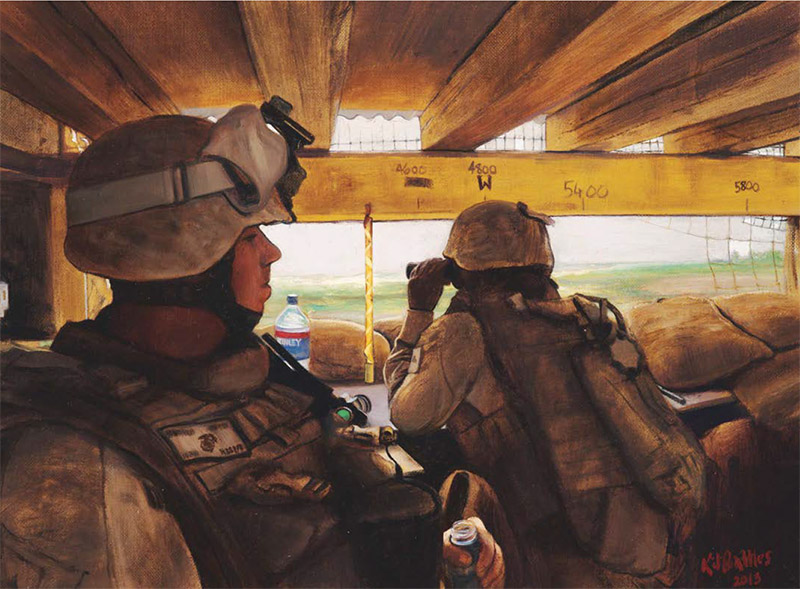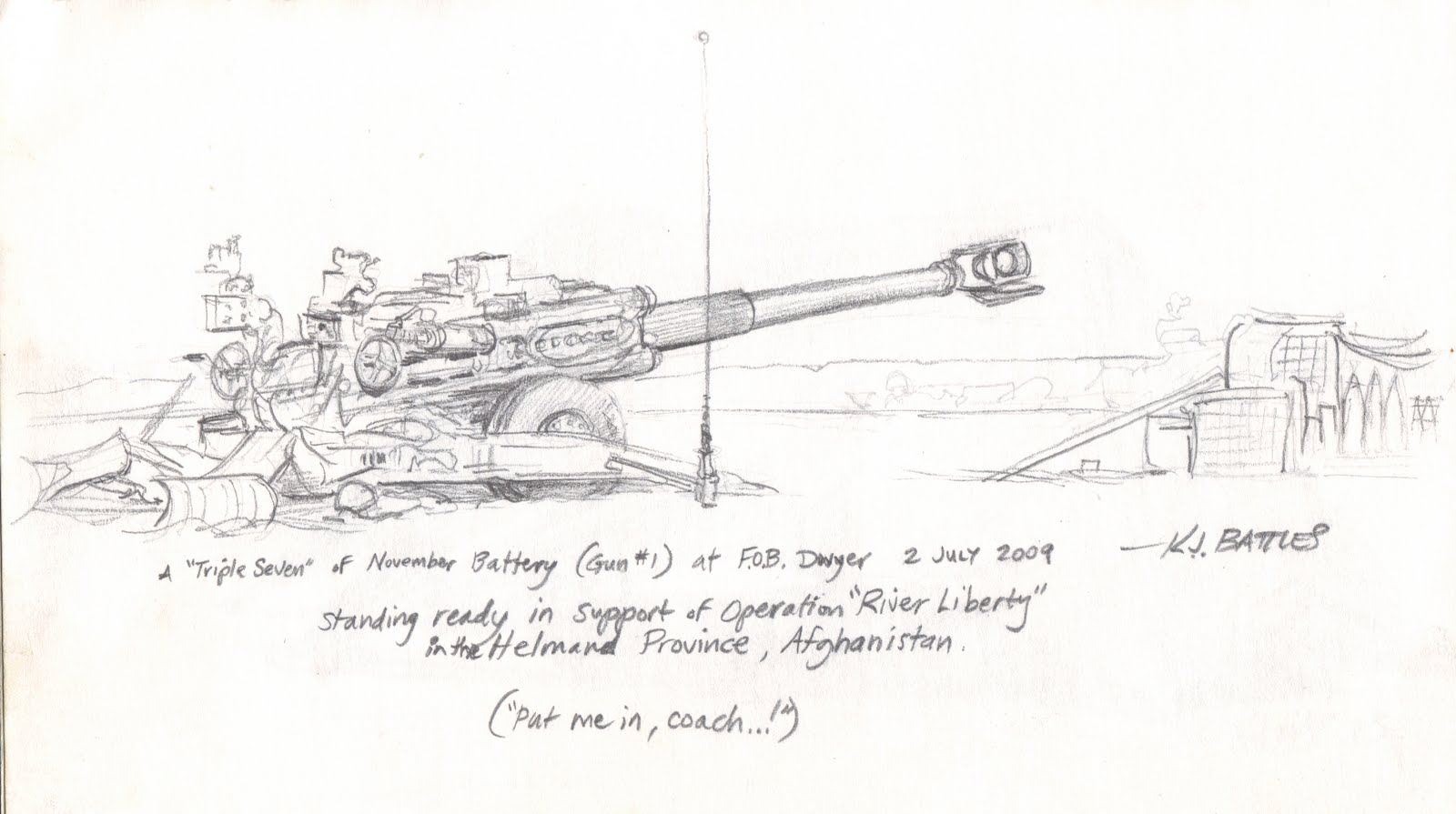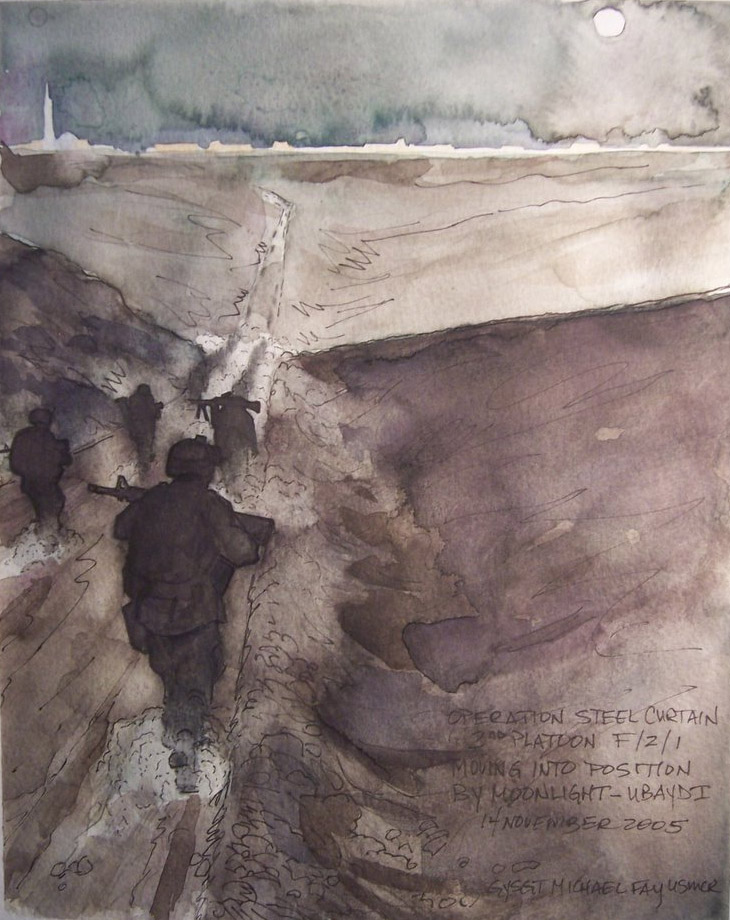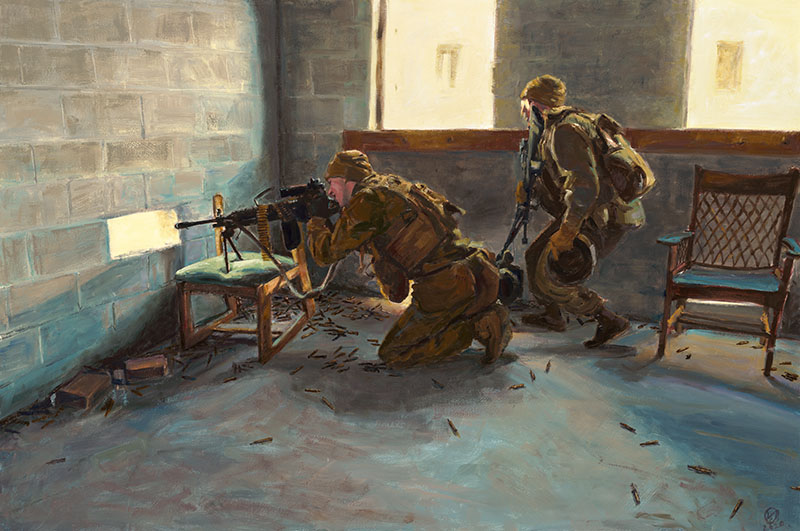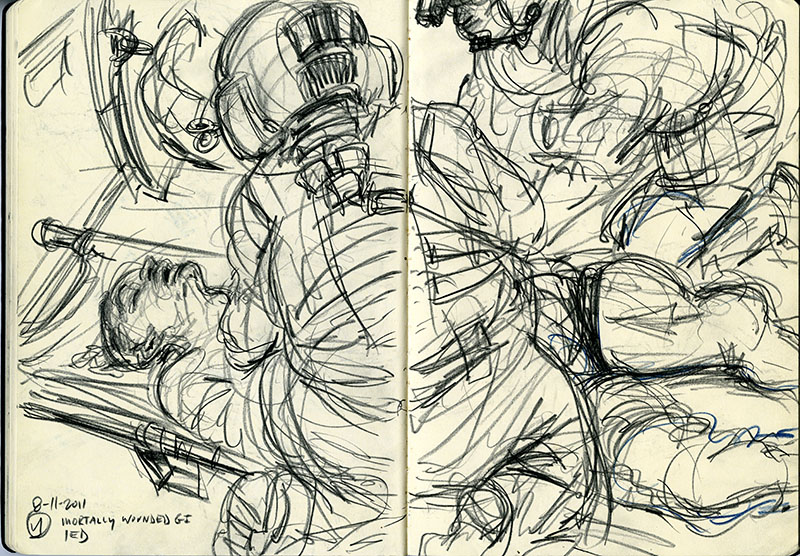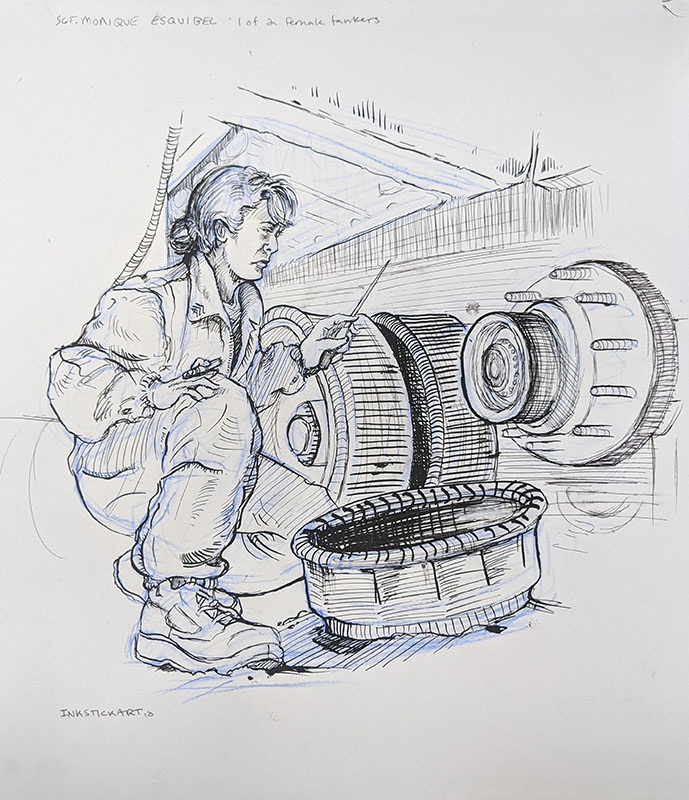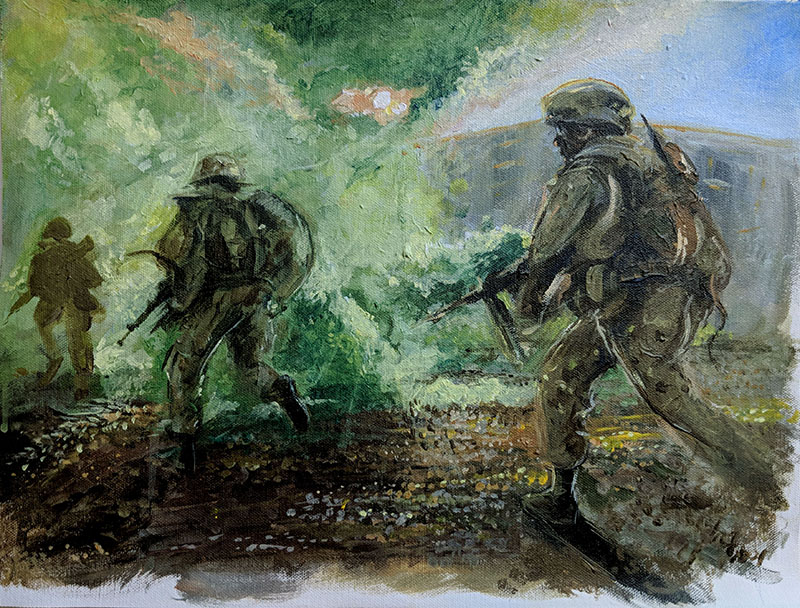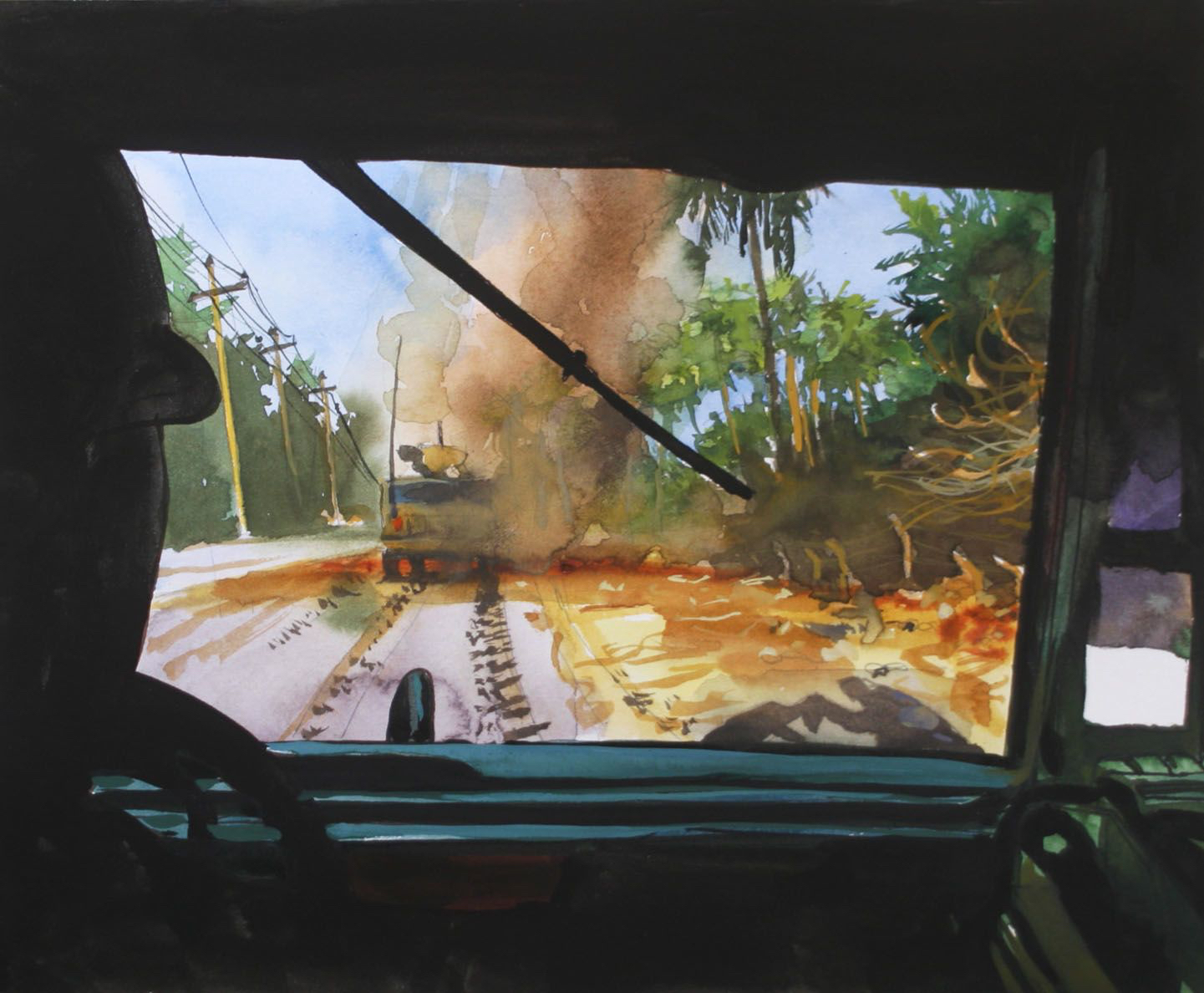Wednesday, November 11, 2020 (Veteran’s Day) – 1pm
Price: Free (Virtual Program + Exclusive Q&A – reservations required)
 Join Kristopher Battles, Michael Fay, Victor Charles Juhasz, Elize McKelvey, and Steve Mumford, who will discuss their experiences as embedded illustrators across the branches of the armed forces and the power of art to tell personal stories. The history of artist’s working in the field, from the American Civil War to America’s more recent engagement in the Middle East, will be explored.
Join Kristopher Battles, Michael Fay, Victor Charles Juhasz, Elize McKelvey, and Steve Mumford, who will discuss their experiences as embedded illustrators across the branches of the armed forces and the power of art to tell personal stories. The history of artist’s working in the field, from the American Civil War to America’s more recent engagement in the Middle East, will be explored.
Despite the growing efficiency of cameras in the nineteenth century, photography on the battlefield was difficult due to long exposures and cumbersome equipment. Because of this, Civil War illustrator reporters like Winslow Homer, Alfred Waugh, and Edwin Forbes were engaged to capture events that photography at the time could not. In the twentieth century, wartime illustrators remained in demand⸺as skillful practitioners they were able to prioritize in chaotic situations and assemble compelling visual evidence that communicated to viewers in a visceral way.
Official war artists have been part of the American military since 1917, and programs sponsored by branches of the armed forces continue today. This Veteran’s Day, we’ll honor and share the work of five gifted embedded artists, who will discuss their personal stories relating to this unique aspect of their service.
Kristopher Battles
Originally serving as a Marine Reservist from 1986 until 1996, Kristopher Battles became a Marine combat artist after reenlisting in 2006, and deployed to Overseas Contingency Operations several times to create art for the United States Marine Corps, serving in that billet until 2014. Now a civilian, Battles is the Marine Corps Artist in Residence at the National Museum of the Marine Corps.
Michael D. Fay
While in the Marines, Michael D. Fay served in the Presidential Helicopter Squadron under President Reagan and participated in Operations Desert Shield and Desert Storm, Eastern Exit, and Provide Promise campaigns. He reenlisted into the Marine Corps Reserve in January 2000 to fill the billet of combat artist with the Field History Detachment supporting the Historical Division of the Marine Corps. The artist’s goals is to communicate the human face of war.
Victor Charles Juhasz
A popular political and editorial illustrator, Victor Charles Juhasz began collaborating with The Joe Bonham Project in 2011, drawing and painting wounded soldiers and Marines at Bethesda Naval Hospital and McGuire Hospital in Richmond, VA—documentation related to the wars in Iraq and Afghanistan. That year, he embedded with the 152nd Arctic Thunder Dustoff (MEDEVAC) Unit in Kandahar, accompanying Army medic teams on helicopter rescue missions. The resulting drawings and writings inspired by his experiences in Afghanistan were published in the online edition of GQ magazine in 2012. His visual documentation is part of the permanent collections of both the US Air Force and the United States Marine Corps. Recently, in June 2020, Victor’s art work sketching essential workers during the COVID-19 pandemic was highlighted by Rolling Stone Magazine.
Elize McKelvey
Elize McKelvey is a graduate of the illustration program at Lesley University and was deployed various times to include one mission to the Middle East to document Marines in action in 2019. SSgt McKelvey is a combat artist with the U.S. Marine Corps Combat Art Program, which is managed by the National Museum of the Marine Corps. During one mission, when several Marines were killed in an Osprey aircraft crash in Hawaii, SSgt McKelvey was able to share with the victims’ families her sketches of the men during their last days. Elize McKelvey’s combat art work can be seen currently at the Peace River Botantical & Sculpture Gardens in Punta Gorda, Florida until November 21st.
Steve Mumford
During his numerous deployments between 2003 and 2013 to war zones, army hospitals, and the Guantanamo prison complex, Steve Mumford made hundreds of drawings on the spot, bearing witness to war and its consequences. Mumford synthesizes experiences and observations from his trips into large-scale oil paintings that invoke specific and universal aspects of war. He is also interested in covering current events in his art, such as the BP oil spill that he documented for Harper’s Magazine.




